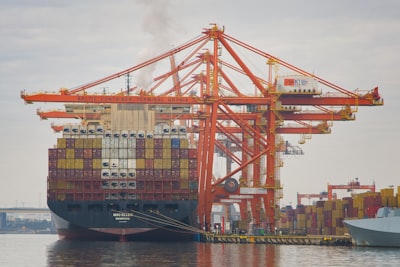Japan’s Rare-Earth Imports from China Hit Five-Year Low: Implications for Global Supply Chains and Tech Industries
Japan’s rare-earth imports from China have plunged to their lowest point in over five years, sparking intense debate and growing concern across international supply chains and tech sectors. With a dramatic 72% year-on-year drop in May 2025—falling to just 582.4 million yen—global businesses, governments, and innovators are asking critical questions about rare earths, supply chain resilience, and the emerging resource race.
Why Are Rare Earths So Important?
Rare earth elements (REEs) are critical materials essential in manufacturing everything from smartphones and electric vehicles to wind turbines, military technologies, and advanced electronics. As countries intensify their push towards green energy and digital technologies, rare earth demand is soaring. But sourcing and refining these 17 minerals is complex, limited to just a handful of nations, with China long dominating both mining and export.
What’s Driving the Japan-China Trade Shift?
Recent trade restrictions implemented by Beijing—seen as retaliation against U.S. tariffs and wider geopolitical tensions—have directly impacted Japanese supply chains. Japan, the world’s third-largest economy and a major electronics producer, now faces pressing questions about how to secure its access to these strategic resources. Companies reliant on stable, predictable rare-earth supplies may see cost volatility or production challenges if alternative solutions aren’t found.
Global Supply Chain Vulnerabilities Exposed
The decline in rare-earth imports from China to Japan highlights broader vulnerabilities in global supply chains:
- Overreliance on Single Suppliers: China's grip on the rare-earth market (often over 60% of global output) means that sudden policy shifts or trade restrictions have outsized effects worldwide.
- Exposure to Geopolitical Risks: As U.S.-China and China-Japan tensions persist, countries must increasingly prepare for resource weaponization.
- Bottlenecks in Green Technology: From batteries to renewable power generation, shortages and price spikes for rare earths threaten the pace of global decarbonization.
Can Japan and the World Reduce Their Dependence on China?
As Japan faces rare-earth scarcity, governments and industry are exploring alternatives:
- Supply Diversification: Investing in Australian, American, or Southeast Asian rare-earth mines.
- Recycling and Circular Economy: Scaling up recycling of rare earths from end-of-life products like magnets and electronics.
- Tech Innovations: Developing new technologies that use less or no rare earths, or utilize more abundant alternatives.
- Strategic Reserves and Alliances: Building up national stockpiles and fostering resource alliances among nations.
What’s Next for Rare-Earth Markets and Technology Supply Chains?
This new trade dynamic between Japan and China is likely to reshape rare-earth strategies worldwide. Expect to see more government investment, public-private partnerships, and a renewed focus on critical mineral security—not only for strategic industries but for future economic stability.
FAQ: Japan, China & The Future of Rare Earths
Q: What are rare earth elements used for?
A: They’re used in advanced electronics, electric vehicle batteries, wind turbines, and defense technologies.
Q: Why is China so dominant in rare earth production?
A: China has rich natural deposits, established refining technology, and government support, giving it a global market edge.
Q: How can countries reduce rare-earth dependence on China?
A: Through sourcing diversification, recycling, investing in new mining projects, and supporting alternative technologies.
Q: Is there a risk of permanent shortages?
A: Most experts say disruptions will spur innovation and new supply, but in the short term, shortages could happen if trade tensions persist.
Key Takeaways
- Japan’s rare-earth imports from China plummet, exposing global supply chain risks.
- Companies and governments are racing to secure alternative supplies, recycle, and innovate.
- The rare-earth debate is now at the heart of technology, trade, and geopolitical strategy.
For tech manufacturers, policymakers, and sustainability advocates, the rare earth story is far from over. Staying informed and resilient in the face of shifting global dynamics will be crucial as we navigate the future of technology and resource security.

Comments
No comments yet. Be the first to comment!